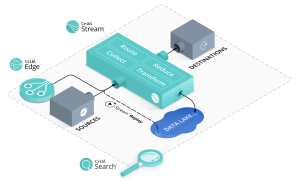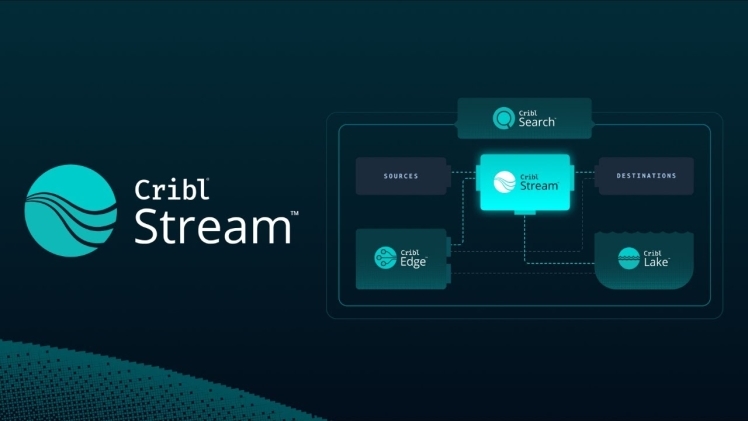Cribl is a software company that focuses on providing solutions to manage and optimize data within IT environments. Founded in 2017 by Clint Sharp, Dritan Bitincka, and Ledion Bitincka, Cribl is primarily known for its flagship product, Cribl LogStream, which is designed to help organizations route, reduce, and enrich data in flight. The software is particularly significant in today’s data-driven world where efficient data management can drastically impact decision-making, security, operations, and compliance. This article will explore the concept behind Cribl, its key offerings, applications, and the overall impact on IT infrastructure management.
The Genesis of Cribl
Cribl was born out of the necessity to control and get more value from the massive amounts of machine data that enterprises generate. Machine data, which includes logs, metrics, and traces, is notoriously voluminous and challenging to manage. It also tends to be underutilized due to these challenges. The founders, having backgrounds from Splunk, recognized the potential to enhance data processing and analysis by providing more flexibility in how data is handled across various tools and storage solutions.
Cribl LogStream: The Core Product
At the heart of Cribl’s product lineup is LogStream, a highly versatile data pipeline tool that allows IT teams to manage their data streams more effectively. It acts as a ‘streaming processor,’ sitting between the data sources (like logs and metrics from applications and infrastructure) and the storage or analysis tools (like SIEMs, data lakes, and monitoring systems). Here’s how LogStream benefits organizations:
- Data Routing and Redirection: LogStream can direct data to the most appropriate destination based on its content, context, and relevance. This means that data can be sent to cheaper storage for long-term retention or to high-performance systems for real-time analysis, depending on its importance and utility.
- Data Reduction: One of LogStream’s standout features is its ability to reduce the volume of data without losing critical information. This is achieved through filtering, masking, and aggregating data. By reducing data volume, organizations can significantly cut costs related to storage and processing.
- Data Enrichment: LogStream enhances data by adding context before it reaches analytics tools. This could involve decorating logs with geographic information, security context, or any other metadata that increases data utility for analysis.
Applications of Cribl LogStream

The applications of Cribl LogStream are diverse and impactful across various domains:
- Security: In cybersecurity, the speed and quality of data analysis can be the difference between a successful breach and a thwarted attack. LogStream’s ability to enrich and route security logs in real-time helps security teams detect and respond to threats more effectively.
- Compliance: For compliance, LogStream can ensure that sensitive data is masked or filtered out before it reaches storage, helping organizations meet various compliance requirements like GDPR, HIPAA, etc.
- Operational Efficiency: By optimizing data flow and reducing unnecessary data storage and processing, LogStream helps IT operations teams manage infrastructure more efficiently and reduce overhead costs.
Market Impact and Adoption
Cribl has been rapidly adopted by enterprises looking to make their IT operations more data-centric. The ability to optimize data in motion and at rest aligns well with trends like digital transformation, cloud migration, and more stringent data regulations. Companies that leverage Cribl’s solutions often report significant improvements in operational efficiency, cost management, and analytical capabilities.
Future Prospects
As more companies recognize the value of efficient data management, the demand for tools like Cribl LogStream is expected to grow. Cribl continues to evolve its offerings, expanding its reach and capabilities to meet the increasingly complex needs of modern IT landscapes. The future may see Cribl integrating more AI and machine learning features to automate many aspects of data optimization and analysis.
Conclusion
Cribl represents a significant advancement in how enterprises can leverage their data more effectively. By providing a tool that can route, reduce, and enrich data on the fly, Cribl enables organizations to harness the full potential of their information assets. As businesses continue to generate more data, solutions like those offered by Cribl will become increasingly crucial in the IT ecosystem, not just for managing costs but also for driving innovation and competitive advantage.
What is the use of Cribl?
Cribl is primarily used to optimize the flow of data within IT infrastructures, particularly focusing on log and event data. Its main tool, Cribl LogStream, acts as a data pipeline that processes and routes data in real-time between various sources and destinations. The software enables organizations to manage, transform, and deliver their data more effectively by reducing unnecessary data volume, enriching data with valuable context, and routing it to appropriate storage or analysis tools. This functionality not only enhances data utility and accessibility but also helps in reducing costs associated with data ingestion, storage, and analysis, making it a crucial tool for companies looking to leverage their data for security, compliance, and operational efficiency.
Is Cribl better than Splunk?

Cribl and Splunk serve somewhat different purposes, making a direct comparison challenging. Splunk is a powerful platform primarily used for searching, monitoring, and analyzing machine-generated big data, via a web-style interface. It excels in providing operational intelligence. On the other hand, Cribl is designed to optimize data before it is ingested into analysis tools like Splunk. Cribl LogStream allows users to reduce, enrich, and route data more efficiently, potentially reducing the workload and costs associated with data storage and analysis in tools like Splunk. Therefore, rather than being better or worse, Cribl complements Splunk by enhancing its efficiency and effectiveness, enabling organizations to tailor their data streams to meet specific needs before they are analyzed.
What is Cribl for Splunk?
Cribl LogStream for Splunk is a specialized version of Cribl’s core product designed to enhance the functionality and efficiency of Splunk environments. It serves as a powerful data pipeline that sits between data sources and Splunk, allowing organizations to preprocess, reformat, and reduce their log data before it is ingested into Splunk. This preprocessing includes capabilities such as filtering out unnecessary data, enriching logs with additional metadata, and routing data to different Splunk indexes based on its characteristics or the needs of the business. The primary benefit of using Cribl for Splunk is to optimize data flows and reduce licensing costs by decreasing the volume of data Splunk needs to process and store, thus enhancing overall performance and cost-effectiveness of the Splunk ecosystem.
Who is the CEO of Cribl?
As of my last update, the CEO of Cribl is Clint Sharp. Clint is one of the co-founders of Cribl and has been instrumental in guiding the company since its inception in 2017. His leadership is rooted in a deep understanding of data analytics and management, having previously held significant roles at Splunk, where he developed expertise in operational intelligence and big data technologies. Under his direction, Cribl has focused on providing innovative solutions that enable businesses to manage and optimize their data more effectively, ensuring that organizations can extract maximum value from their information assets.

